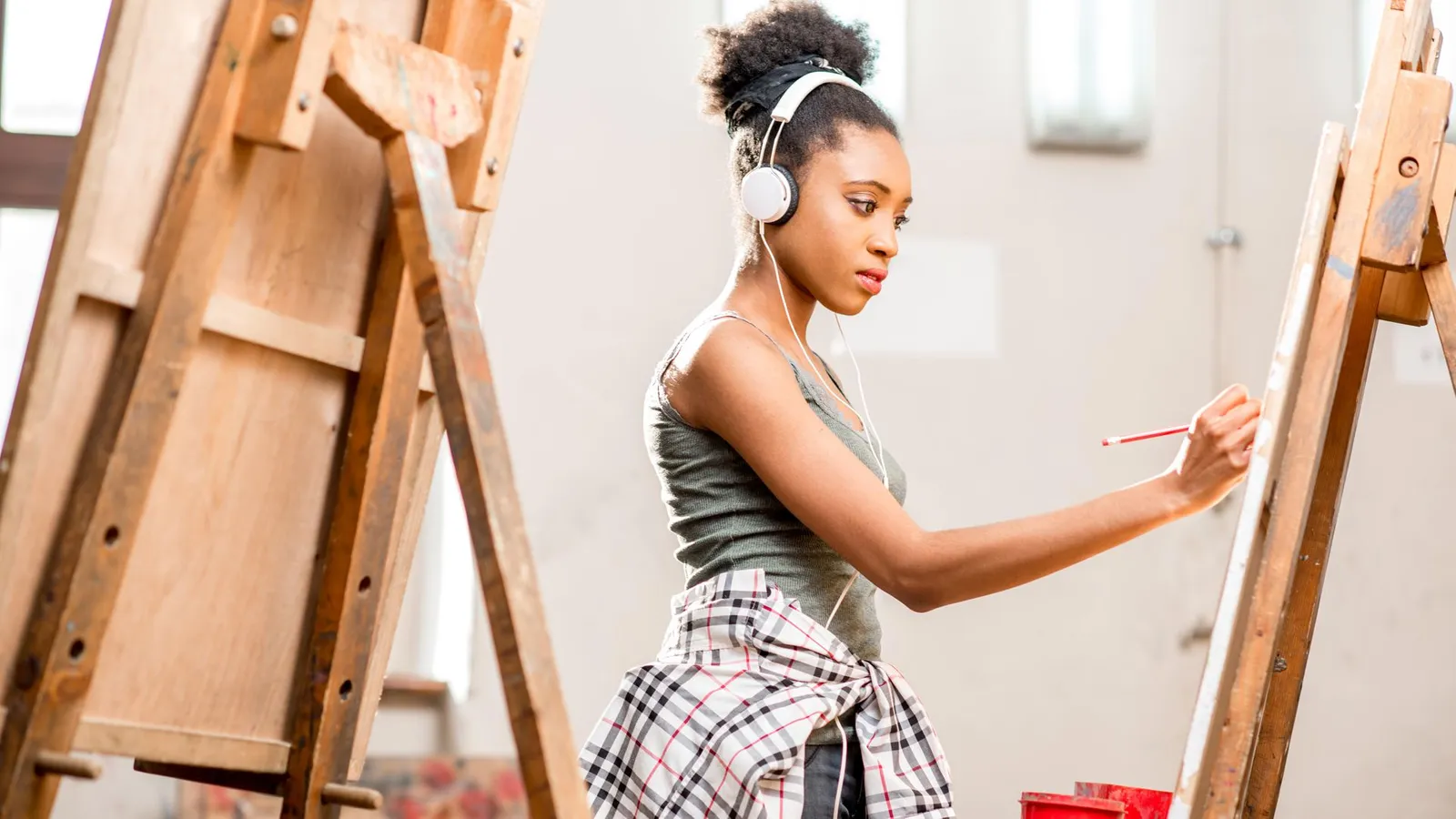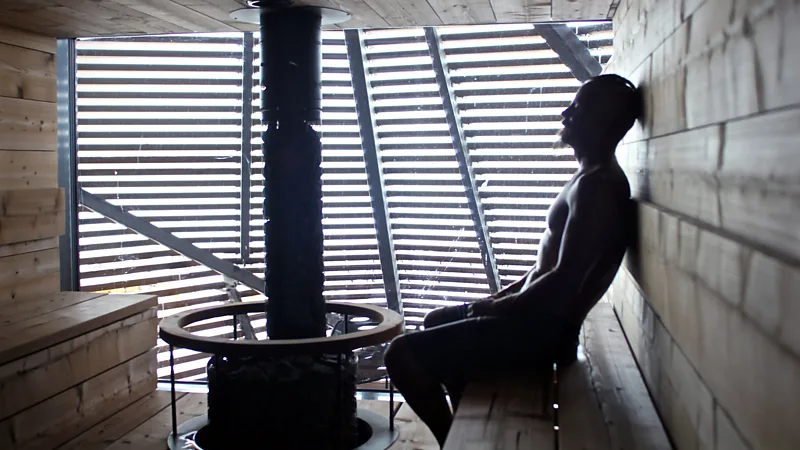Why drawing is the perfect digital detox
Sketching and drawing have grown in popularity in recent years – why? Beverley D'Silva explores the healing power of mindful drawing.

Drawing is arguably the most ancient form of visual art – whether on the body or on stone. The earliest known drawing by a human was discovered in 2021 at the Blombos Cave, South Africa: some 73,000 years ago, a human hand took an ochre crayon and carved a cross-hatch design on a silcrete stone flake. The medium of drawing is engrained in us all. It's our first means of expression and creativity, says Julia Balchin, principal of the Royal Drawing School, London: "As a child, before you can even talk, or walk or read, you can draw. So it's often our first way of expressing ourselves".
Drawing has always been vital to every artist's practice, dating from the Renaissance – when drawing flourished, and Leonardo da Vinci created detailed anatomical studies of the human body – to today, when artists such as William Kentridge's powerful films created with drawings to Tracey Emin's drawings expressing her personal grief and loneliness.
Though drawing's popularity has "ebbed and flowed for centuries", Balchin identifies a deep ebb in the 1970s, when the academic art world saw it as "very unfashionable" – especially life drawing – and schools such as the Slade and the Royal Academy stopped teaching it. The Royal Drawing School (RDS) was set up in 2000 to address this, and be "a place where artists and people who wanted to draw could come to draw."
Picking up a pencil or charcoal and mindfully making marks connects us to our haptic skills, and offers a respite from the relentless digital drain
Drawing is enjoying popularity again – appreciated for its therapeutic qualities and the sense of "flow" it engenders, especially since the lockdowns during the pandemic. Student intake (online) at the RDS, doubled in 2020 from 1,000 students a week, and has grown steadily to 3,000 today, with life drawing accounting for more than half of its four modules: "I think that showed there was a real longing for human touch and contact," says Balchin. "If people couldn't be around other humans, they were drawing them instead." Students confirmed it helped mental wellbeing. "Many came purely for that… to slow the pace of life."
Picking up a pencil or charcoal and mindfully making marks connects us to our haptic skills, or sense of touch, and offers a respite or rest from the relentless digital drain, which is important for mental health. In the UK, art therapy can even be experienced by some via the NHS.
When artist Emily Haworth-Booth became ill with ME, she was unable to work. Trying to read or write sent her "into a spin", she relates in Ways of Drawing (a 2019 book by RDS). She found mindful drawing "became a kind of anchor I could drop to ground myself, to reassure myself… I was 'here', reality was solid". Drawing "noticeably reduced my anxiety, and slowed down my breathing". This allowed "healing to take place", she says. After a drawing session she felt "the relief and endorphin rush I've experienced after, say, a yoga class or very useful psychotherapy session".
Claire Gilman, chief curator at the Drawing Center in New York, has also seen a passion for drawing surge in lockdown, and continue growing since: "At that time artists were returning to drawing for many reasons – including being shut out of their studios", but acknowledges the "desire to pick up a pen or pencil, and immediately translate your feelings on to paper", especially in "trying moments", has a universal appeal.
Gilman and Roger Malbert, curator and writer on contemporary art, collaborated to produce Drawing in the Present Tense, a richly illustrated overview of "diverse approaches to drawing". Work by the 74 contemporary artists selected reflects "drawing's role as a way of addressing personal social trauma and unrest", among other things.
Malbert describes the purpose of drawing as "teaching you to look, and look at the world differently. If you register what you're seeing… you bring the world into consciousness in a very direct way. That is available to people who draw all over the world". Gilman believes drawing in particular, offers "a relief from looking at screens, which we're so addicted to. A life drawing class, especially, forces you to look at the world – one not mediated through a screen – and translate that".
Healing properties
Chinese artist Zhang Yanzi is featured in the book. Her love of "medicine and spiritual wellbeing” infuses her delicate drawings of Chinese masks and flower parts, that portray "the mysterious interplay of mental and physical phenomena and the afflictions of mind and body". Zhang believes art has "the power to assuage psychological suffering".
Drawing can put you in touch with the world, and yourself, and can change how you see things – Roger Malbert
Malbert relates to the idea of drawing's healing properties: "I've always drawn in a mildly therapeutic way," he says. "When drawing from nature, I find concentrated time sitting in a natural environment, drawing… is definitely mood enhancing." He equates it to doing yoga "when you're not thinking of anything else" and finds (like Balchin), it can be "meditative".
Artist John Hewitt says that any anxiety he has about making a "bad" drawing is offset by the pleasure he gains from "a line that flows perfectly… unexpected patterns and rhythms, and other small successes".
Hewitt has a long, distinguished career as a teacher at the Royal College of Art and artist of imaginative and detailed drawings. He's made sleeve art for The Pogues; drawn rough sleepers in Manchester "to raise awareness of the homeless problem"; and was the only person (other than a BBC crew) invited to record the proceedings at actor Laurence Olivier's memorial at Westminster Abbey.
His broader success has built since 2013, with a drawing posted (almost) every day on Instagram. His lively images of animals and life in the South Pennines are often drawn on the hoof, always in Moleskin pocket sketchbooks – "the bedrock of my practice" – with a 0.5 Pilot gel pen.
Hewitt's most-liked post so far has been a portrait of a cat. Black cats always win most likes, he says: "The weight of the ink when seen on phones makes more impact I think." It's not been all cute cats: he witnessed the scene of the 2005 London terrorist bombings, but had no sketchbook, so made 59 drawings from memory, later shown at the Museum of London. He drew his mother in hospital, in her final days. "I felt there was nothing else I could positively do, so I drew her arm, her pillows, the bed."
But what of art as mental health therapy? The closest he's got to that are drawings he makes on full-moon nights. "They give me enormous and immediate pleasure as they hold to no standards of 'good' drawing. I've no idea what they look like till I go indoors: the surprise is the reward."
Artist Charlie Mackesy started drawing avidly at the age of 19, after his best friend was killed in a car accident. "I started to draw as a sort of Forrest Gump reaction to trauma," he told GQ. "I started drawing… and I just couldn’t [stop]. It was a way of processing everything." His 2019 picture book, The Boy, the Mole, the Fox and the Horse, drew an army of fans for its poignant drawings and homilies on life and friendship.
Drawing, says Malbert, can "put you in touch with the world, and yourself, and can change how you see things, be that… social strife, humanity, emotions. It can expand your emotional reach – and that is pretty profound."
-bbc







